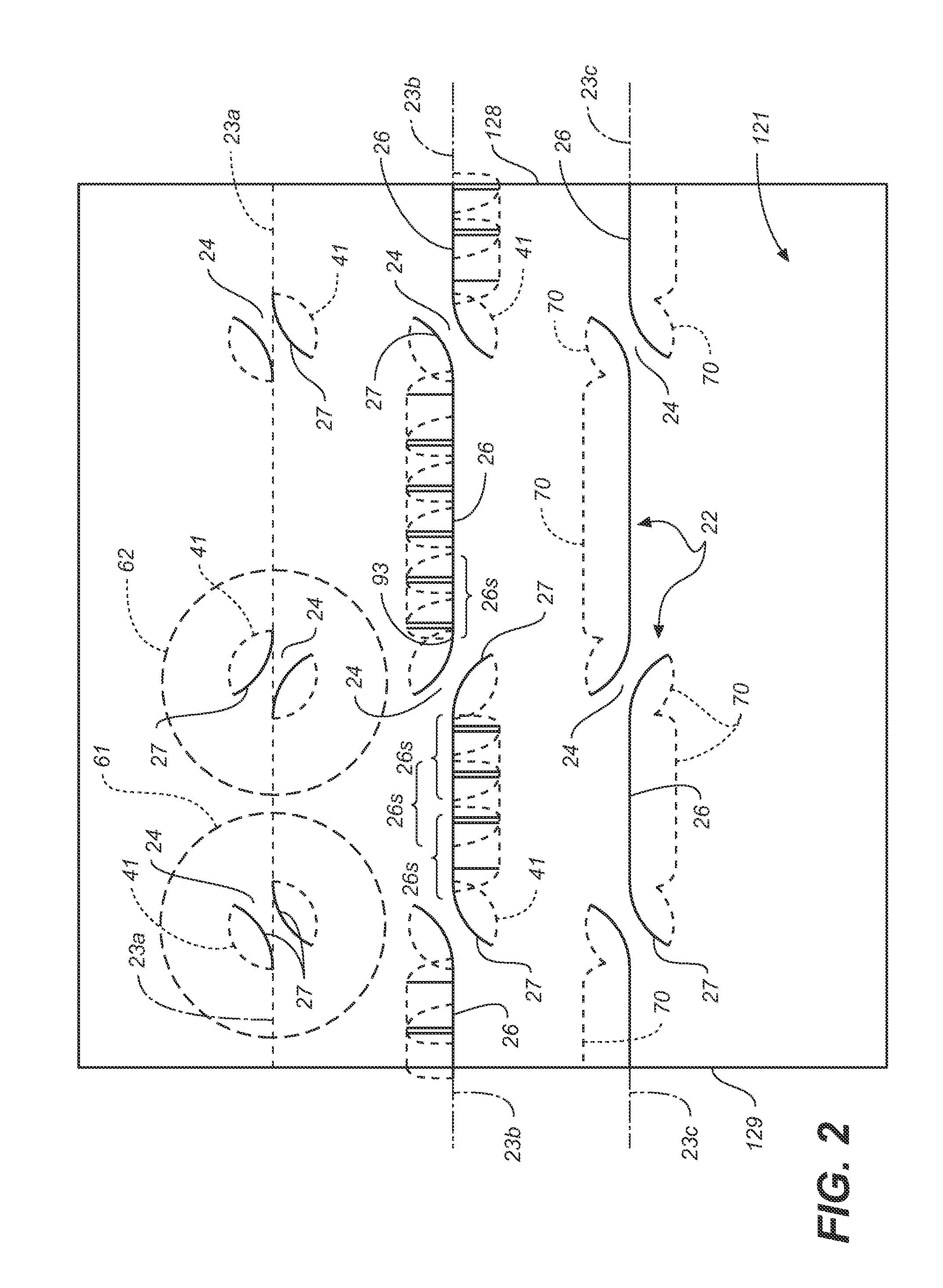Process of forming bend-controlling structures in a sheet of material, the resulting sheet and die sets therefor
a technology of bend control and sheet material, applied in the direction of shaping tools, handling devices, forging/pressing/hammering apparatus, etc., can solve the problems of unsatisfactory large number of punching or stamping die sets, product dimensions, etc., and the resulting sheet and die set are not suitable for slit dimensions. , the problem of slit lengths being complicated, and the inability to adjust the slit length to accommodate slits
- Summary
- Abstract
- Description
- Claims
- Application Information
AI Technical Summary
Benefits of technology
Problems solved by technology
Method used
Image
Examples
Embodiment Construction
[0071]Reference will now be made in detail to the preferred embodiment of the present invention, examples of which are illustrated in the accompanying drawings. While the invention will be described in connection with the preferred embodiments, it will be understood that the illustrated embodiments are not intended to limit the invention. On the contrary, the invention is intended to cover alternatives, modifications and equivalents, which may be included within the spirit and scope of the invention, as defined by the appended claims.
[0072]Referring now to FIG. 1, a sheet of material 21 is shown which has a plurality of bend-controlling structures, generally designated 22, formed therein along desired bend lines 23. In this case each bend-controlling structure 22 is shown as a slit which penetrates completely through the thickness dimension of sheet 21. As disclosed in the prior-related applications, grooves and displacements which do not penetrate completely through the thickness d...
PUM
| Property | Measurement | Unit |
|---|---|---|
| included angle | aaaaa | aaaaa |
| included angle | aaaaa | aaaaa |
| included angle | aaaaa | aaaaa |
Abstract
Description
Claims
Application Information
 Login to View More
Login to View More - R&D
- Intellectual Property
- Life Sciences
- Materials
- Tech Scout
- Unparalleled Data Quality
- Higher Quality Content
- 60% Fewer Hallucinations
Browse by: Latest US Patents, China's latest patents, Technical Efficacy Thesaurus, Application Domain, Technology Topic, Popular Technical Reports.
© 2025 PatSnap. All rights reserved.Legal|Privacy policy|Modern Slavery Act Transparency Statement|Sitemap|About US| Contact US: help@patsnap.com



